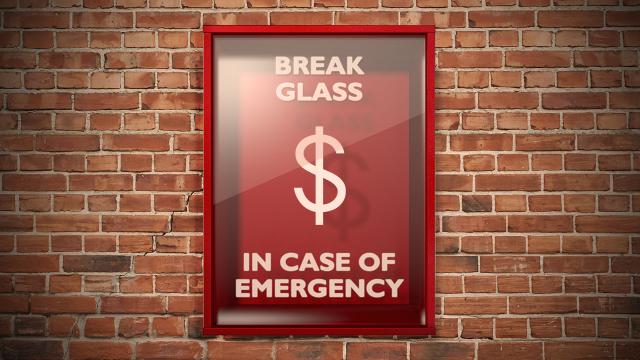An emergency fund is cash you’ve saved for one purpose: to help you cope with the emergencies that life hands you, without disrupting your everyday routine. It could be an accident or a health issue — with your fund you have room to breathe. The key, however, is to leave the fund alone until you need it. Deposit your money, let it earn a little interest, and ignore the balance until an actual emergency occurs.
This post originally appeared on My Bank Tracker
Short-Term Methods For Building An Emergency Fund
In the short-term, take small steps. Start by setting a reasonable goal. Plan to have an emergency fund of, say, $300 to $500. That’s a goal you can probably reach in a few weeks, and it can make a huge difference when you have an emergency.
With the goal set, the next step is to plot the moves to accomplish it. If you can save $30 to $50 a week, you can have a $300 to $500 emergency fund in just ten weeks. That becomes your overall goal.
Make a realistic savings plan, both in the amount you can save each week, and the overall amount. Make it a challenging, but not unreachable, number.
There are plenty of ways to come up with extra money throughout the month. Consider these suggestions:
- Negotiate a rate reduction on your credit cards
- Set up a carpool
- Shop around for better auto or homeowner’s insurance
- Install a programmable thermostat
- Use a list for grocery shopping
- Plan only one special outing a month
- Get a roommate
If you find that you’re actually saving more than $50 a week with this method, put more into the emergency fund, or pass it on to your retirement savings.
Once you’ve trimmed $50 a week from your spending, you can set up an automatic savings plan to move that money straight out of your regular account and into the savings account you’re using for the emergency fund. If you have online banking, it’s pretty easy. Set up an automatic plan to transfer $50 a week into savings, and then forget about it.
Setting Up Your Online Savings
It’s a good idea to set up a savings account at a bank that’s different than the one you normally do business with. This lets you shop for better service and better rates, earn a higher interest on your funds, and it forces you to put the money somewhere that’s not too easy to access. If it’s an account that’s not linked to your ATM card, you would have to authorise the transfer, which may take a day or two. You could even set up automatic deposit of your pay each month with a predetermined amount set for savings.
Set A Larger Goal
Once the account you’ve established to save $50 a week has accumulated enough money, it will start earning noticeable interest on its own. Then it’s time to set another, higher goal — maybe an emergency fund of $1000. Keep your automatic savings plan in place, but increase the amount. Once you reach that goal, aim for a single month’s worth of living expenses. Then two months. Then three. And just keep watching that emergency fund grow.
When you do have an emergency, the funds are there for you. Use them instead of putting an emergency repair or other unexpected bill on your credit card.
Building On Your Emergency Fund For The Future
For emergencies, and savings in general, establish good habits by setting aside 15 per cent of your annual income when you’re in your 20s, with five per cent going into your emergency fund and 10 per cent to long-term savings. As you age, increase the percentage of income you’re saving to 20 per cent in your 30s, and even more in your 40s.
The best way to make sure your savings grows is controlling debt. And your prime target should be credit card debt, because it’s the most expensive. Pay down credit accounts and aim at maintaining a maximum 30 per cent credit utilisation ratio. In other words, keep your card balances at 30 per cent of the total credit limit. If your total credit line is $10,000, owe no more than $3,000 (and spread the same ratio over multiple accounts).
Your emergency fund shouldn’t be touched — until you actually need it. Thanks to your planning ahead, life will have some financial stability.

Comments